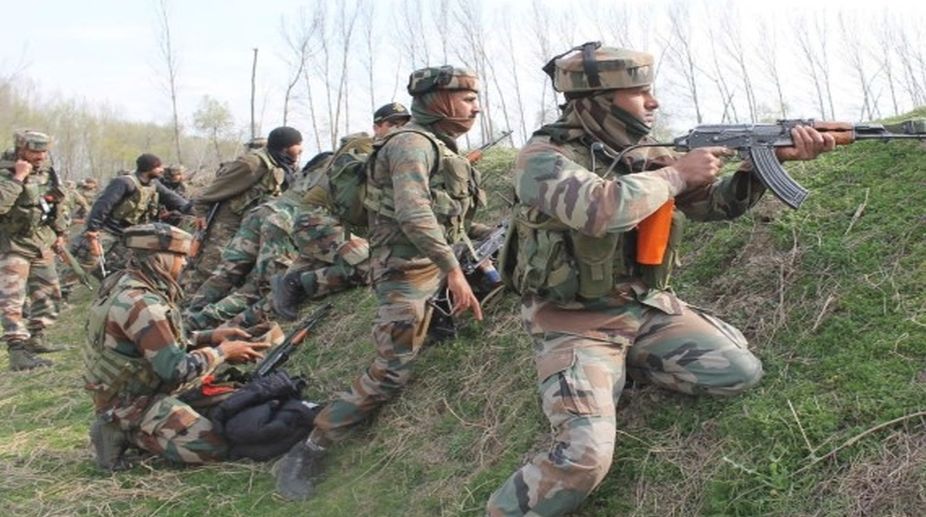BSF Jawan’s death in Tripura election camp surrounded in mystery
Raksa Nargis Keshav of the 199th battalion of the BSF in Panisagar, North Tripura, hailed from Latur, Maharashtra.

Representational Image.
The North Eastern Region (NER) first faced the problem of insurgency in the late 1950s when rebels in Nagaland fired the first salvo and the canker spread to Manipur, Mizoram, Tripura and a part of Assam.
The situation in Nagaland and Manipur is volatile even as the NDA government has initiated a political process to conclude a peace agreement. Tripura grappled with insurgency for over two decades since the 1980s. It was contained in the first decade of the new millennium and, as such, it may be of interest to examine how insurgency was tackled in the landlocked state.
Tripura, or for that matter insurgency in the NER, was rooted in such factors as its landlocked topography, dismal socioeconomic infrastructure, the long porous border with Bangladesh, ethnicity, dysfunctional governance, near-total emotional disconnect with the mainland, rampant corruption at the administrative and political levels, political vacuum, demographic changes, land alienation of the tribals, and meagre employment opportunities. Bangladesh turned out to be the launch-pad of the insurgents.
Advertisement
The origin of insurgency in Tripura may be traced to the formation of the Tripura Upjatiya Yuva Samati in 1971 and later in 1981of the Tripura Volunteer Force, which was wound up in 1988. The “hawks” floated a frontline militant group and formidable outfit called the National Liberation Front of Tripura emerged on 2 March 1989, followed by its armed wing called the All Tripura Tiger Force in July 1990.
These developments queered the pitch as the militants questioned the merger of Tripura with the Indian Union and came up with a secessionist agenda, which of course was subsequently diluted. In the main they demanded the sovereignty of Tripura; the removal from the electoral rolls of those illegal migrants who entired Tripura after 1956; implementation of the Tripura merger of 1949; and restoration of land to the tribals under the Tripura Land Reform Act, 1960.
Between 1996 and 1998 insurgency was generally subdued; it gained momentum from 1998 until there was a remarkable drop in extremist-related incidents. Triprura insurgents acquired a sizeable stock of sophisticated weapons, wireless sets, muscle and money power.
They developed a nexus with the Nagaland insurgent outfits which helped them to procure arms and ammunition and organize training in jungle warfare and communication systems. Thailand was reportedly another source of supply. Pakistan’s ISI and a hostile Bangladesh Government lent moral and material support. This made insurgency in Tripura volatile and aggressive.
High-voltage insurgency led to an orgy of violence, murders, kidnappings, closure of educational institutions, banks and government offices in the affected areas. The government, led by the dedicated Chief Minister, Manik Sarkar, framed a multidimensional, and fine-tuned strategy.
The striking features were: counter-insurgency operations; Intelligence collection and action; psychological intervention; confidence-building measures such as a healing touch and rehabilitation; accelerated development; a suitable ecosystem; civic action programme of the central security forces; and an appropriate political process.
As Governor of Tripura from June 2003 to October 2009, I had participated in the formulation of the roadmap. The Central Security Forces and the state police had a pivotal role to play. However, relations between them were far from cordial. The crackdowns were generally based on intelligence data and inputs from local sources such as the Forest Department and wood-cutters.
Security forces were kept under the scanner at the highest levels, including that of the Governor and Chief Minister, to ensure that no indiscriminate action was resorted to in course of the operations and that there was no violation of human rights. Fortunately, there were no such complaints and this helped to end the hostility against the government and security forces and led to a smooth conduct of operations.
The struggle against the insurgents was protracted. There had to be a fusion between conflict management and conflict resolution, embedded in a spirit of goodwill and understanding. There was a gulf between the dominant ethnic tribe and other ethnic entities which were reduced to a subservient position.
This culminated in clashes, murders and arson. An eco-system comprising the media, television, circulation of seminar proceedings to intellectuals and educational institutions, art groups, and civic entities and social organizations such as the Ramakrishna Mission was forged to create necessary awareness about the scourge of insurgency.
The Chief Minister and I, political functionaries and civil society members visited the remote areas and called upon the insurgents to abjure violence, return to the mainstream of society, reap the fruits of development and be a stakeholder in the development of their State.
That approach yielded dividend and the insurgents started returning to society. Indeed, a faction of the frontline outfit NLFT (NB) called on the Governor with a cache of arms and ammunition.
By now 4705 insurgents have returned to the mainstream and employment has been provided to them. Confidence-building measures, the healing touch and a rehabilitation package were formulated. As a political process, the Chief Minister organised peace marches taking on board social activists and civil society members in insurgencyhit areas. Micro-democratic institutions, Autonomous Development Councils, Gram Panchayats and Village Councils were turned into an active and vibrant local governance modules.
Tripura scripted a success story of triumph over insurgency through a conflict resolution mechanism, multi-dimensional dynamics, positive mindset, a firm will, the right vision, credible leadership, people’s participation, creative response to the challenges, modulated combat operations, zero tolerance to excesses combined with a psychological operation.
Let us hope that the NDA Government’s well-intentioned political process, initiated to douse the fire of insurgency in Nagaland and Manipur, will eventually lead to peace.
The writer is former Governor of Chhattisgarh and Tripura and former Chairman, AN Sinha Institute of Social Studies, Patna.
Advertisement